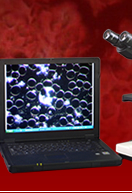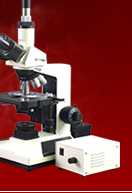
Science Activity for Students and Children: Examining Spiders under a Microscope
Spiders are usually one of the many creatures that people are afraid of either because of their appearance or the threat of being poisoned by their bite. Amazingly, the fear of spiders is not so much an acquired fear as it is an evolved instinct to a fear. We are born to fear things like spiders and snakes. Somewhere during the evolutionary process, humans who feared these creatures must have survived more than those who didn’t, and passes on their evolutionary traits to future human generations. Anyway, we cannot deny the fact that spiders are also perhaps one of the most fascinating creatures on the planet. They weave these delicate-looking yet sturdy webs while at the same time maintain their hold on these silken ropes. For our microscope science activity, we will try to find out what is behind these wonders while at the same time getting to know more about spiders. This microscope activity will prove to be very educational and exciting for teachers and their students or children.Before we begin with our science experiment with spiders using a low power stereo dissecting and a high power compound microscope, we will first have to make things clear about spiders. Many people have mistaken these web-crawling creatures to be under the class of insects where in fact it is not. Spiders are not insects and they belong under the class of arachnids which have two divisions of the body as opposed to the insect’s three parts.
We can compare and contrast the spider’s anatomy to an insect’s by obtaining a spider and a random insect and examining them with the use of a low power stereo binocular dissecting microscope. While the insect has a head, thorax and abdomen clearly divided from one another, we will see that the spider’s head and thorax are merged as a single piece. Spiders do not also have any antennae or wings and their feet that serve as their sensory functions. Finally, the most easily distinguishable characteristic that separates the spider from the insects is that spiders have four pairs of legs while insects only have three. We can examine these creatures without the aid of the microscope, however, the stereo dissecting microscope aids us in seeing the finer details. Even the use of a simple microscope lens such as a magnifying glass will yield more interesting features for the student to discover.
Now that we have acknowledged the differences between spiders from a common insect, we will then move on to knowing the spider’s unique features. Let us focus our stereoscopic dissection microscope to the first pair of appendages located above its mouth. This is called the chelicerae and it functions as the spider’s feeding and defense appendage. The chelicerae seize and secrete poison from the tip of its appendage’s claw to kill its prey. This poison is strong enough to kill insects or injure large animals. It is not, however, dangerous to humans.
The next spider structure that we will observe under a low power binocular microscope is its book lungs. The book lungs are the spider’s air sacs that have slit-like openings. Under a dissecting stereo microscope, you can find them at the end of the abdomen and they look like spots that are trapezoid in shape but have rounded angles. If we focus the stereoscope to one of the book lungs using the focus adjustment knob, we will see that it has horizontal folds that look like leaves of a book and range from fifteen to twenty. This is where the blood circulates and makes a close contact with the air that enters through the outer openings.
Finally, we will get to know how or where the spider makes its silken thread by examining it under a stereo binocular microscope. Using our stereoscope, try to locate finger-like projections at the tail end and underside of the spider’s abdomen. You will see these finger-like projections that are at most six in number. These are the spinnerets or the spinning organs that the spiders use for spinning its threads. If we focus on these spinnerets, we will see hundreds of tubes scattered on it. These are the spinning tubes where the silk fluid from the silk glands passes through, hardens in the air and becomes a thread. You may want to use a high power compound light microscope to see these microscopic tubes more clearly and under greater magnification.
We can take a look at these silk threads made by the spiders and compare it with an ordinary silk that was produced by silkworms. A silk from a silkworm under a high power microscope look like solid rods that are shiny and smooth. A spider’s thread, on the other hand, will have rounded drops on two strands. This gives the sticky quality to some of the spider’s web where tiny insects get trapped onto. The two strands give the elasticity of the thread.
There are also some spider threads that do not have the sticky quality so it makes us wonder as to how the spider manages to get a firm hold on the threads without falling. We will learn the answer to this by examining the leg of a spider under a low power stereo dissection microscope. We will then see that the spider’s feet have claws that look like combs. These bristles grab onto the thread and prevent the spider from losing hold.
With this microscope activity, students as well as children or kids can learn more about the fascinating things about spiders. This activity will prove to be educational to high school and elementary science classes and will give the students more experience in handling their low power dissecting and high power biological microscopes.




